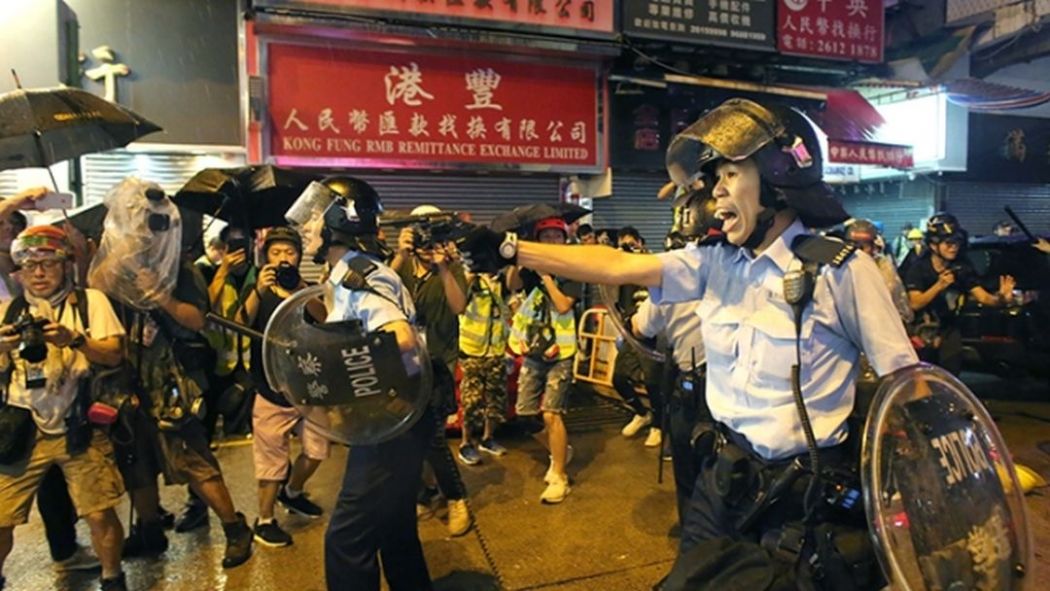Hong Kong police loosened their internal guidelines for using lethal force a day before an officer fired live ammunition at a student protester, according to local media reports.
A leaked memo showed amendments to the “Force Procedures Manual” under the Police General Orders (PGO), which was issued shortly before 11pm on September 30. An officer was permitted to use lethal force such as live rounds when facing an assault that causes, or is “relatively likely” to cause, death or serious injury.
In the previous version of the guidelines, officers were required to ascertain whether the assailant had “intent” to cause death or serious injury before lethal force could be used. The new version omitted any mention of intent.

In response, Hong Kong police said that the relevant PGO chapter was not publicised because doing so would “hurt police’s efforts to prevent and investigate crime, and hinder the normal operations of the force.”
Tsang Chi-kin, 18, was shot in Tsuen Wan as a group of protesters clashed with officers on Tuesday afternoon. He was shot in his left lung—three centimetres from his heart—and was in stable condition after surgery.
Hong Kong saw citywide unrest on Tuesday as the People’s Republic of China celebrated its 70th anniversary. The city has seen over 17 consecutive weeks of protest sparked by a now-scrapped extradition bill which would have enabled fugitive transfers to China.

According to reports by Apple Daily and Stand News, the police also amended the “Force Procedures Manual” to expand the options of weapons for officers to use when facing “violent attack” or “strong resistance.”
Police can now use tear gas, pepper spray or pepper balls under such circumstances, whereas in the past officers could only use hand-to-hand methods of control.
The guidelines also included new mentions of “less-lethal” weaponry, such as water cannon trucks, sponge rounds, beanbag bullets, rubber bullets and extendable batons. The less-lethal weapons can be used when officers are dealing with violent attacks, the document read.

Pro-democracy lawmaker Lam Cheuk-ting questioned whether the move was meant to allow officers to dial-up their use of force against protesters, adding that the amendments came at a “sensitive time.”
The “Force Procedures Manual” has remained secret, with police refusing to disclose its contents as early as 2003. Short excerpts from the relevant PGOs came to light in a 2011 court case, where the document stated that an officer should “exercise a high degree of restraint when dealing with the public,” and “shall not resort to the use of force unless such action is strictly necessary and he is otherwise unable to effect his lawful purpose.”
According to the manual, the underlying principle was that “only the minimum force necessary to achieve the purpose may be used and once that purpose has been achieved, the use of force shall cease.” The various measures available to the police—from pepper spray to batons to firearms—existed on a “continuum,” which the PGO said should correspond to the level of resistance encountered.

Icarus Wong, founder of the Civil Rights Observer, said civil society groups have long called for a full disclosure of the PGOs. He previously told HKFP that the police needed to be held to a clear standard, especially with regard to controversial tactics like aiming weapons at protesters’ heads.
“We only know about the [use of force guidelines] in broad terms, sometimes through Legislative Council documents and or what was communicated verbally by officials,” Wong said. “That is not enough.”
Hong Kong Free Press relies on direct reader support. Help safeguard independent journalism and press freedom as we invest more in freelancers, overtime, safety gear & insurance during this summer’s protests. 10 ways to support us.

